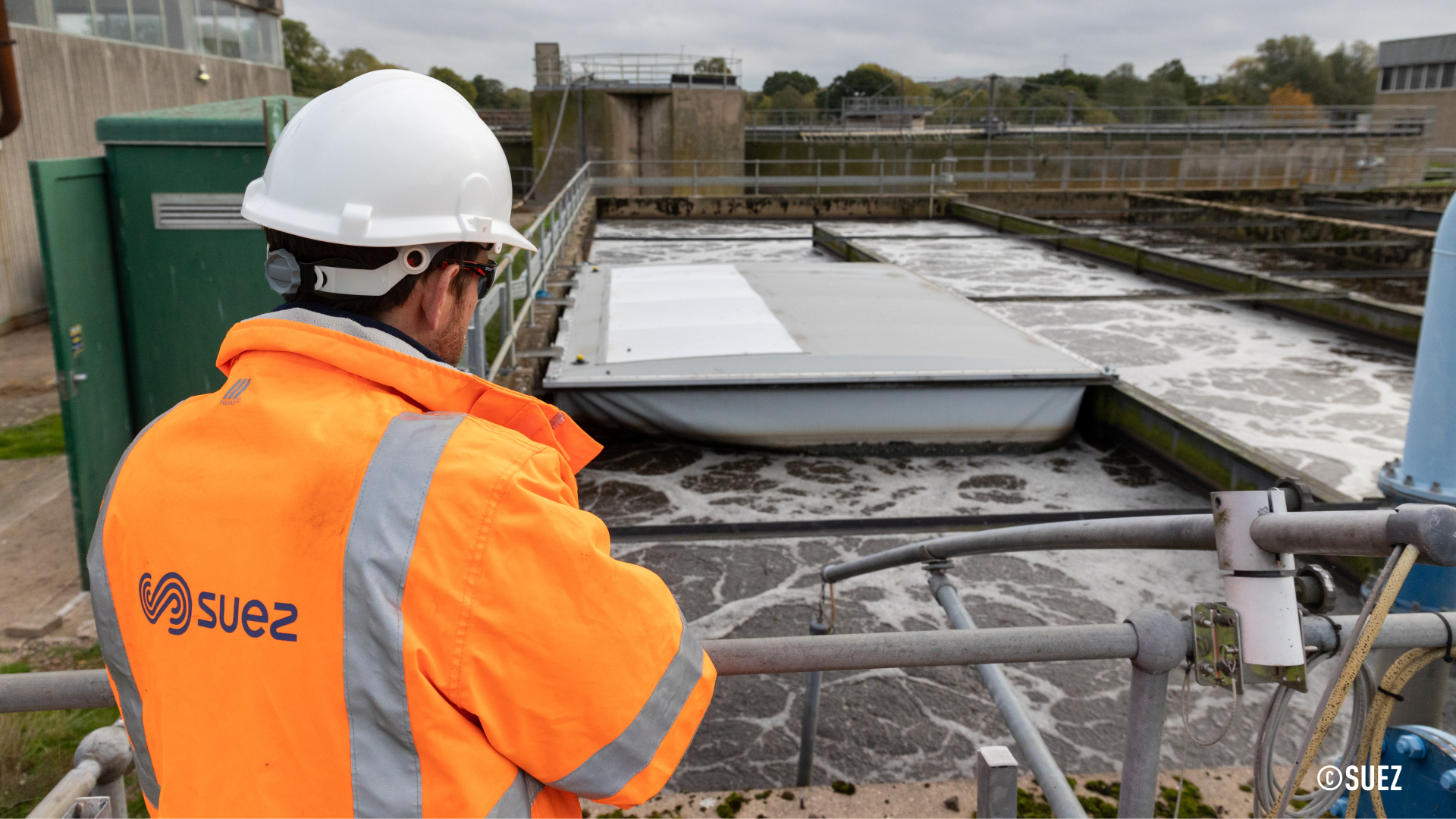SUEZ has announced its partnership with Severn Trent Water in the world-first, multi-million Net Zero Hub set to start in September in the latter’s Strongford Sewage Treatment Works in Staffordshire, in the West Midlands region of the UK.
The Net Zero Hub at Strongford is a full ‘at-scale trial’ of the AirAdvanced®ActiLayer technology, which has been first tested at Severn Trent’s Spernal wastewater treatment plant. It is aimed at reducing and eliminating as much as 34,000 tonnes of carbon emissions annually. It addresses the water industry’s significant contribution to the UK’s carbon footprint, which is estimated at 2%-5%, with two thirds of these emissions associated with waste treatment activities.
Robert Kelly, Air & Climate Business Development Director at SUEZ, expressed enthusiasm about the collaboration, stating: “We recognise the urgency to reduce direct process emissions and aspire to achieve Net Zero while providing access to water services, with resilient and innovative solutions. We are delighted to partner with Severn Trent on this Net Zero pathway.”
The Net Zero Hub, the world’s first carbon-neutral waste treatment facility, is being supported by the Ofwat Innovation Fund with a £10 million grant. The Ofwat Innovation Fund provides financial support for pioneering water sector innovations, with a goal to advancing sustainable and management practices in the industry. This is one of two Ofwat Innovation Fund 2023 awards involving SUEZ, which is committed to driving ecological transition to customers worldwide.
Horizon Europe, the EU’s key funding programme for research and innovation, awarded the project another £900,000, while Severn Trent invested £28 million to make this goal a reality.
Liv Garfield, CEO of Severn Trent, emphasised the significance of the carbon-neutral hub, saying: “The impact of this cannot be underestimated given emissions from wastewater are 80% of our operational emissions, and the hub will solve that.” She also expressed the company’s commitment to sharing the hub’s blueprint with other water companies worldwide, enabling the retrofitting of wastewater treatment plants with these innovative technologies.
AirAdvanced®ActiLayer, an innovative on-site solution, aims to tackle N2O gas emissions from activated sludge plants and significantly reduce the carbon impact associated with wastewater treatment. By combining ActiLayer with other cutting-edge technologies, SUEZ aims to revolutionise carbon impact reduction in wastewater treatment processes.
Initially created for odour control purposes, AirAdvanced®ActiLayer offers an advanced filter that utilises light energy (often sunlight) to break down captured pollutants through a process called photocatalysis. It can be retrofitted into existing tanks, offering a cost-effective emissions management solution on-site.
AirAdvanced®Actilayer’s unique photocatalytic treatment mechanism has already proven its effectiveness in treating nuisance odours such as hydrogen sulfide (H2S) and volatile organic compounds (VOCs). Now, SUEZ is pioneering its application for N2O emissions reduction, showcasing the technology’s versatility and potential to tackle one of the most pressing challenges in the industry.
According to David Black, CEO of Ofwat, the water sector has been confronted with increasing pressure due to environmental and societal challenges, amplified by the rapidly evolving climate. “This is why we’re funding groundbreaking innovations with potential to help us save and reuse water and wastewater products, while supporting wider society,” he added.
The SUEZ AirAdvanced®ActiLayer team will provide technical support, conduct additional Air Quality measurements, and undertake robust monitoring all throughout the project. AirAdvanced®ActiLayer will be complemented by AirAdvanced® SCAN 360, a tailored service that helps companies examine their greenhouse gas (GHG) emissions on a site-by-site basis and optimise site efficiency.
The Net-Zero Hub is supported by all UK and Irish Water companies and international Net Zero Partnership with Aarhus Vand in Denmark and Melbourne Water in Australia.



